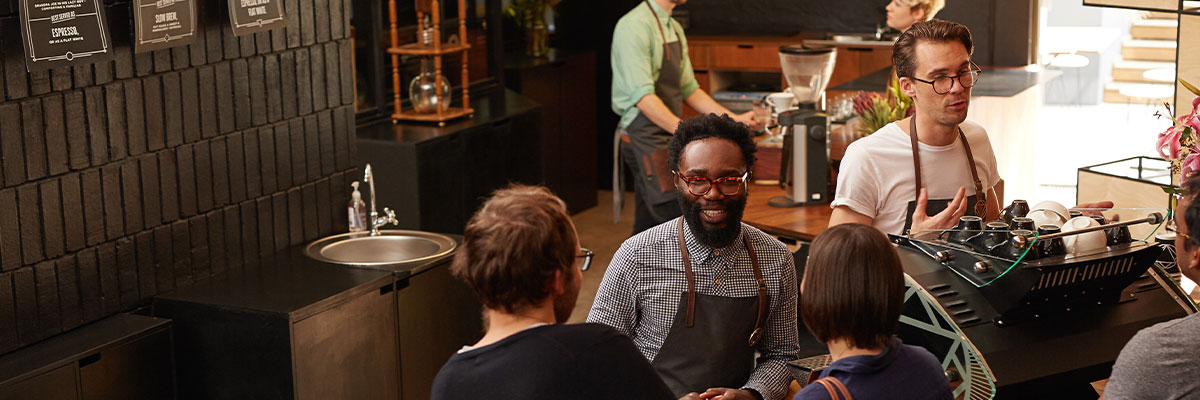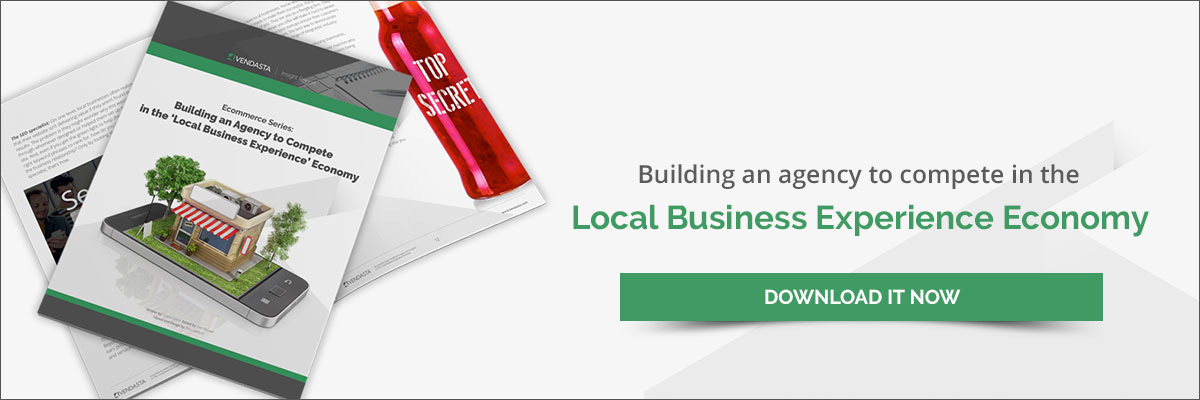Creating a Local Business Experience Difference
Local businesses arguably have an edge in customer experience because they often get to know their customers as “regulars” when they meet them in person.
For a long time now, business and management experts have been suggesting that successful businesses no longer compete on the quality of their products and services. Many categories are becoming commoditized, in part because they’re so readily available online.
Instead, successful companies compete on the customer experience they offer. This is often shortened to CX.
CX is much more than offering great customer service and support, although that’s important. It’s an approach to doing business that looks at the entire journey customers take — from marketing their products to the moment they make a sale and how they keep the relationship going long afterwards.
In its 2020 report on the ROI of an effective CX strategy, software firm Qualtrics surveyed more than 10,000 U.S. consumers describing their experiences with different companies across 20 industries. The results were pretty clear.
For example, 94 percent of consumers who give a company a “very good” CX rating said they are likely to purchase more products or services from that company in the future. The same percentage said they would recommend a company with whom they’d had a good experience to their family and friends.
On the flip side, if consumers gave a company a poor CX rating, only 15 percent of them were willing to forgive them or a bad experience. That means they’ll likely be looking at competitors instead, and probably sharing their bad experience with those they know.
The Local Business Edge

What defines a good customer experience? This is obviously subjective, but it often boils down to three elements:
- Was I (as the customer) successful in getting what I wanted out of the experience? For instance, was I able to buy what I needed?
- Was the effort to be successful minimal? This would translate in being able to find products easily, to be able to purchase quickly and to get all questions answered thoroughly.
- Did I feel positive about the experience? As a customer, you want to feel welcomed when you arrived, that your needs are considered important and that, if you make a purchase, it’s appreciated and you’re confident you can get help and support afterwards.

Local businesses arguably have an edge in CX because they often get to know their customers as “regulars” when they meet them in person. They might have a lot at stake in terms of what they’ve invested to get the business off the ground, so they’re sure to treat customer needs as important. And we all probably have stories where a local business did something extra to make us feel good, whether it was throwing in a complimentary item or just the way they smiled and thanked us as we left.
As more business activity moves online, though, local businesses will need help in understanding how to personalize and enrich those relationships through digital channels.
There are plenty of frameworks and guides out there to assist with CX, but these are often aimed at large brands — a national retail firm or a big bank, for example. Even if a local business is in the business-to-business (B2B) space, a lot of the advice tends to focus on how one large enterprise works with another large enterprise.
Nobody’s really talking about what the customer experience should be like when you’re a local business looking for help with your growth strategy.
Agencies who work with Vendasta have a two-pronged opportunity. First, they can define what a best-in-class local business experience looks like by the way they serve their clients. Second, they can show how a local business experience strategy will change the way their clients serve their own customers.
In other words, they’ll be showing their clients how to pursue excellence in offering a local business experience, or LBX.
Moving Forward With an LBX Strategy

This doesn’t mean reinventing the wheel necessarily. As a trusted advisor, your role is to take a lot of the traditional CX best practices and filter them through the prism of what you know a local business does, and how it might need to extend its customer experience online.
Start by mapping the customer journey, because they’ll get it what it means right away.
Consumers might have traditionally stumbled across a local business as they were going for a walk in their neighbourhood, for example, and decided to pop in.
They might make a spontaneous purchase because they see something they like, and as the owner chats them up and suggests other items they might like, they decide they’re going to come back more often.
This same journey can happen digitally, but requires more foresight and planning to be consistent and to make it happen at scale.
As an agency or channel partner, you need to help a local business understand how customers might find them online. It could be through looking up a keyword phrase in a search engine — a phrase that should become part of their web site’s SEO.
Next, you show the local business how they would “welcome” customers once they arrive on the web site with strong marketing copy and by inviting them to sign up for email offers.
Walk them through the ease of making an online purchase when you have the right platform working behind the scenes. Then demonstrate the way they can use marketing tools to get some solid reviews, and monitor their online reputation as it builds.
You’ll bring value to your clients not just by setting them up with all the initial tools they’ll need to establish an online presence, but to identify points of friction.
The customer journeys we’ve talked about so far have been pretty idyllic, even utopian. We all know it can play out a lot differently in the real world.
What could go wrong — or even just force the customer to make more effort than necessary — when a customer buys something from a local business online?
What about the process of handling returns, where dissatisfaction turns into outrage?
Finally, consider what the strategy you help them develop will include in terms of continuous performance improvement.
Large companies measure how well they’ve provided an outstanding customer experience by using tools like Net Promoter Score (NPS), Customer Effort Score (CES) or customer satisfaction (CSAT) scores.
A local business might not be as familiar with those metrics, and some might be more appropriate than others, but show them how the use of survey tools and other feedback mechanisms can help them continually refine their approach.
Though the exact details of an LBX strategy will vary from one client to another, these are the elements where you can layer on your own unique expertise and approach to bring it to life.
Download the complete Insight Report to learn how to compete on the experience you offer by helping your clients do the same. Discover how to think just as locally as they do. Get the complete Insight Report: Ecommerce Series: Building an Agency to Compete in the Local Business Economy


